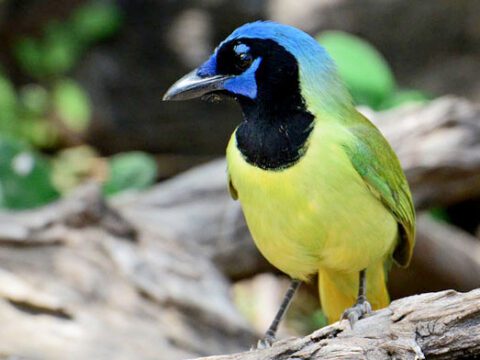Rats! A Menace for Bicknell’s Thrushes
By Laura Erickson
April 15, 2011

Jason Townsend, a graduate student at the State University of New York, was doing research on Bicknell’s Thrush in the Dominican Republic when he got a real eye-opener. “When we first started working there, we were shocked in the evening to look up in that blue, dusky light of sunset and see rats climbing all around in the canopy. We suddenly realized that any songbird roosting up there was vulnerable to these guys,” he said.
Rats have long been known to feed on eggs and chicks of ground-nesting species, but to find predation on adult songbirds in the canopy was a surprise. Townsend and colleagues from the Cornell Lab of Ornithology and the Vermont Center for Ecostudies were tracking 53 Bicknell’s Thrushes using radio transmitters. “We didn’t expect to be able to quantify this with radiotelemetry. But then we caught a signal coming from an underground hole. We excavated it and there was the transmitter, some bands, leg bones, a few feathers—all that was left of the bird. We thought it was a fluke, but it happened year after year.”
After the team started trapping rats, they learned that their population was huge. “Our rate of capture as an index of rat presence was extremely high—as high as anything in the literature for a forested area with introduced rats,” Townsend said. “From 25 to 41 percent of our traps caught rats on any given night—that’s a lot of rats. Bicknell’s Thrushes winter in both low elevation rainforest on Hispaniola and also high-elevation cloud forest. In both forests we had rat predation.”
During the study, which was published in 2009 in The Condor, rats killed five Bicknell’s Thrushes bearing transmitters—almost 10 percent. None of the other birds died or were lost during the course of the study. The researchers concluded that rat predation of roosting thrushes is a significant cause of mortality in winter, the season when mortality should be lowest. Townsend said that on Caribbean islands, “You don’t have the natural avian predators—the snakes, small mammals and rodents, and hawks—that you’d have in, say, Costa Rica. In the Caribbean there are a few Sharp-shinned Hawks, but you don’t think of predation as a limiting factor.”
Rats are numerous in Hispaniola’s broadleaf cloud forests where most thrushes live. But on one study area where there was also a stand of Hispaniolan pine, many of the thrushes flew some distance from their daytime habitat to sleep in the pines, where rats are far less numerous. The research team is investigating the possibility that some of the birds are adapting to rats by avoiding their main nocturnal roosting grounds.
The researchers were tracking just one rare and declining species, but team members have witnessed rat predation on other Caribbean species, including endangered cavity-nesting Hispaniolan Parrots. So the problems with rat predation may be far wider, and deeper, than conservationists realized.
Originally published in the Spring 2011 issue of BirdScope.


All About Birds is a free resource
Available for everyone,
funded by donors like you





